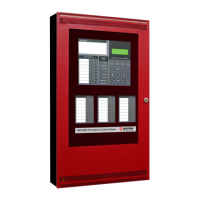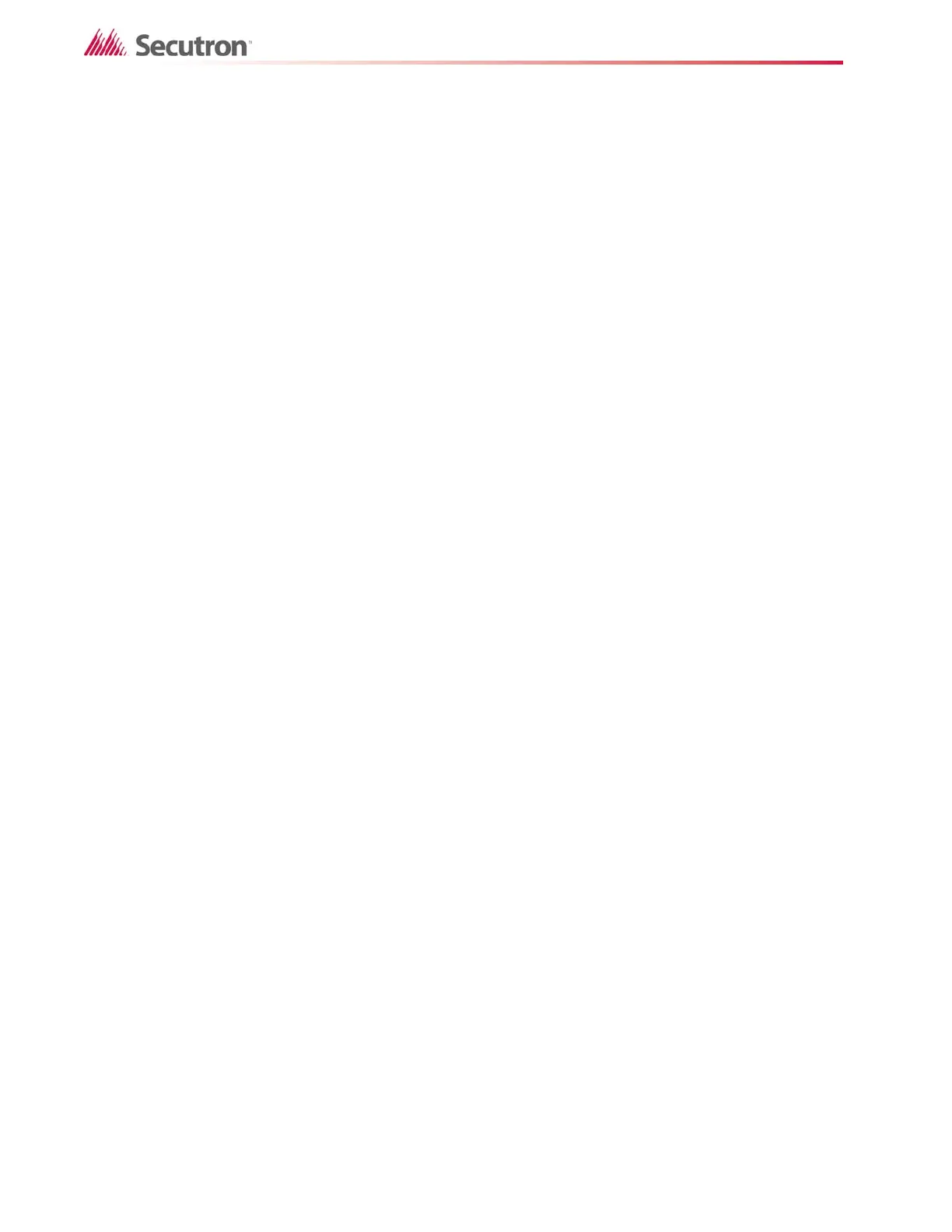32
Editing MHI Databases
number only if all attempts to communicate to the first telephone number fail. If all attempts to
communicate to the third number also fail, a failure to communicate trouble will be generated.
When Disabled is selected, the third telephone number is not used.
The Dialing option has three different options for pulse or DTMF dialing. If All attempts Pulse is
selected, the dialer will always use pulse (rotary) dialing. If All attempts DTMF Dialing is
selected, the dialer will always use DTMF dialing. If 4 attempts DTMF then Pulse is selected,
the dialer will use DTMF dialing for the first four attempts. If unsuccessful, the dialer will switch
to pulse (rotary) dialing for the remaining attempts.
The SIA Rep. Codes option determines whether the dialer will send the automatic reporting
codes that are in the dialer, or use the reporting codes that are programmed in the Zone Data
and Maintenance/Common reporting codes sections. See See Appendix D: Table of
Reporting Codes on page 67. for a list of the automatic SIA Reporting Codes.
The SIA Max Events option sets the maximum number of events the dialer will send for one
SIA transmission. When 20 per Round is selected, SIA sends a maximum of 20 events per
round. When 8 per Round is selected, SIA sends maximum of 8 events per round.
The Contact ID Rep. Codes option determines whether the dialer will send the automatic
reporting codes that are in the dialer, or use the reporting codes that are programmed in the
Zone Data and Maintenance/Common reporting codes sections. See See Appendix D: Table
of Reporting Codes on page 67. for a list of the automatic Contact ID Reporting Codes.
The Test Transmission Line option determines how the dialer chooses a telephone line to send
the automatic test transmission. If Alternate is selected, the dialer will alternate between using
Telephone Lines 1 and 2 for transmissions, regardless of telephone line troubles. If Available
is selected, the dialer will use Telephone Line 1 for transmissions. If a trouble exists on
Telephone Line 1, the dialer will switch to Line 2.
When the Force Dialing option is set to enabled, if the first attempt by the panel to call the
monitoring station fails, on every subsequent attempt the panel will dial regardless of the
presence of dial tone. When Disabled is selected, the panel will not dial the programmed
telephone number if dial tone is not present.
When the Busy Tone Detection option is enabled, if busy tone is detected, the dialer will
disengage the phone line and try to place the call again following the delay between dialing
attempts. When Disabled is selected, the dialer will use the standard dialing procedure for
every attempt.
The Pulse Make/Break Ratio option is for panels in international applications. When 40/60 is
selected, the pulse dialing make/break ratio is the 40/60. When 33/67 is selected, the pulse
dialing make/break ratio is 33/67.
The Handshake option determines the handshake used for BPS transmissions. When 1600
Hz is selected, the dialer responds to a 1600 Hz handshake. When Standard is selected, the
dialer responds to the handshake designated by the format selected (1400 or 2300 Hz).
The ID Tone can be set to 1300Hz or 2100 Hz. The panel will emit a tone at the selected
frequency for 500 ms every 2 seconds when it places a call to indicate that it is a digital
equipment call, not voice. When Disabled is selected, this feature will not be used.

